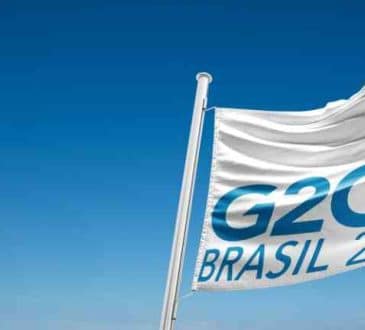What is strategy, and why is it so important?

“Strategy without tactics is the slowest route to victory. Tactics without strategy is the noise before defeat.” – Sun Tzu
We live in a time of great complexity. Today’s business leaders need to navigate an environment that changes by the hour. The uncertainty faced by businesses today makes development of clear, robust, and well communicated strategies more important than ever. At its most basic, strategy is a clear set of plans, actions and goals that outlines how a business will compete in or create a particular market, or markets, with its products or services. A good strategy articulates an organization’s long-term goals and the specific tactical actions it plans to take to reach them.
Popular strategy definitions from eminent thinkers
A hot topic for numerous business books and articles over the decades, several prominent business and academic thinkers have offered insight into strategy’s definition.
According to the godfather of strategy, Michael Porter and his timeless HBR article, to maintain a competitive advantage, a strategy must create an advantageous position through a unique set of activities that competitors cannot easily replicate through variety, needs and access-based positioning. A variety-based positioning involves producing the best subset of the industry’s products or services. A needs-based positioning tailors its activities to the needs of a specific target segment of customers. An access-based positioning involves a set of activities that reaches customers in the best way.
In the popular business book “Playing To Win,” Roger Martin and former P&G CEO A.G. Lafley say the strategy is about “playing to win,” which relies on five key questions. What is our winning aspiration? Where will we play? How will we win? What capabilities must be in place? What management systems are required?
Renowned researcher and author Jim Collins outlines several strategies companies employ that go from good to great, achieving superior results, remarkable impact and lasting endurance. The concepts are broken into disciplined people, thought and action, and building to last.
Avinash K. Dixit and Barry J. Nalebuff focus on applying game theory in their book The Art of Strategy. By including the possible strategies of the opposition, companies can use game theory to seek out “dominant “strategies (i.e. they are the best strategy regardless of what the other players do) or to eliminate “dominated” strategies (i.e. those which your opponent always beats).
Paul Leinwand and Cesare R. Mainardi suggest that most organizations wander away from their “raison d’etre,” creating a gap between strategy and execution. In their book Strategy that Works, they offer four levers that successful companies use to close the “strategy to execution gap.” Create a clear identity, cobble together a set of distinct capabilities that support their identity, leverage their culture effectively, and manage resources to keep and prioritize their unique capabilities.
In the creatively-titled “Play Bigger,” authors Ramadan, Peterson, Lochhead, and Maney explore the concepts of “Category design” and “Category dominance.” By making the strategic choice to define a new category, businesses can differentiate themselves from their competitors, better serve customer needs, and unlock significant value.
Chan Kim and Renee Mauborgne advocate a unique take on strategy: the “Blue Ocean” strategy. Traditional views of strategy, referred to by Kim and Mauborgne as “Red Ocean” strategies, focus on competing within existing industries where boundaries are defined and accepted, and competition rules are understood. Companies try to outperform their rivals to grab a significant share of existing demand. As the space gets increasingly crowded, prospects for profits and growth are reduced, and increased competition “bloodies” the water. In contrast, Blue Ocean’s strategy captures new and uncontested market space, creating demand instead of fighting over it by pursuing differentiation AND low cost.
What all these different and valuable perspectives on strategy teach is that effective strategy requires a clear, differentiated, and focused approach that aligns with an organization’s capabilities, anticipates change, and drives long-term value creation. It involves making tough choices, pursuing innovation, and ensuring alignment across various dimensions of the organization.
Why is strategy important?
Today’s business environment is increasingly complex and dynamic, as technology, the geopolitical climate and consumer demand have intersected for radical disruption in many industries. Operating in this increasingly uncertain and changing environment has made an organization’s strategy more critical. Leaders unwilling to spend the time, treasury and talent required to build an effective strategy are essentially sailors without a compass, entirely at the mercy of external forces.
A robust strategy defines the business with a purpose, a clear set of values, and a distinct direction. It helps understand success and provides a roadmap for the organization to achieve it. With clear goals, developing action plans, measuring performance, deploying resources effectively, making quick and effective decisions, adapting to changing circumstances, or sustaining success is possible. It also helps leaders set organizational goals and gives companies a competitive edge.
What are the common pitfalls?
According to a review article by Candido and Santos in the Journal of Management & Organization, the success rate of strategy execution is meagre. The failure percentages found in scientific studies range from as low as 7% to as high as 90%, with an average of about 50%. While the reasons strategies fail are myriad, there are some common pitfalls that business leaders should look to avoid:
- Poor execution. “Without a strategy, execution is aimless. Without execution, strategy is useless.” – Morris Chang. The second half of the above quote is just as important as the first. Poor planning and execution are the most common pitfall of strategy.
- Lack of quantitative analysis. In the modern business environment, making decisions based on gut instinct or intuition is no longer viable or acceptable. Sufficient qualitative and, especially, quantitative analysis is required for effective strategic decision-making.
- Creating strategy in a vacuum. The strategy must consider the external environment to be effective. In the current pace of change, practices like trends analysis and scenario planning are essential to ensuring your strategy is resilient in the face of uncertainty.
- Confusing strategy and operational effectiveness. Operational effectiveness means performing the same activities better than rivals. Companies can reap enormous benefits from operational effectiveness, as Japanese companies demonstrated in the 70s and 80s through TQM and continuous improvement. However, these best practices are easily emulated and drive competitive convergence instead of a sustainable competitive advantage.
- Not making trade-offs. The essence of strategy is choosing what NOT to do. A strategic position is only sustainable if trade-offs exist because resources are finite, and some activities are incompatible. Trying to “straddle” between different positions or be “all things to all people” leads to massive inefficiencies.
- Confusing practical and “blue-sky” strategy. “Blue sky” refers to a creative thinking approach that removes all limitations and explores all options regardless of how infeasible they may seem. It can be easy to get lost in this line of thinking when developing strategy, but final decisions on strategic objectives and initiatives must be rooted in the practical realities of your business.
- Becoming too formal and structured. Organizations become so formal and structured in their approach that they neglect strategy’s flexible and creative aspects. Out-of-the-box thinking and non-linearity are essential for businesses to succeed in today’s landscape.
Despite these challenges, strategy provides stability in times of crises, something customers, employees and investors can depend on. Organizations have to get better at strategy if they are going to survive or even thrive in a complex and uncertain world.
——————-
Authored by Dr. Lance Mortlock (EY Canada Managing Partner, Energy & Resources, and Haskayne School of Business Adjunct Associate Professor) and Chris Palmer (EY Canada Strategy Senior Manager).
Have you read?
Best Fashion Schools In The World.
Best Business Schools In The World.
Best CEOs And C-Suite Executives In The World.
World’s Most Influential and Innovative Companies.
World’s Best Hospitality And Hotel Management Schools.
Ready to join the CEOWORLD magazine Executive Council– Find out if you are eligible to apply.
Add CEOWORLD magazine to your Google News feed.
Follow CEOWORLD magazine headlines on: Google News, LinkedIn, Twitter, and Facebook.
Copyright 2024 The CEOWORLD magazine. All rights reserved. This material (and any extract from it) must not be copied, redistributed or placed on any website, without CEOWORLD magazine' prior written consent. For media queries, please contact: info@ceoworld.biz








